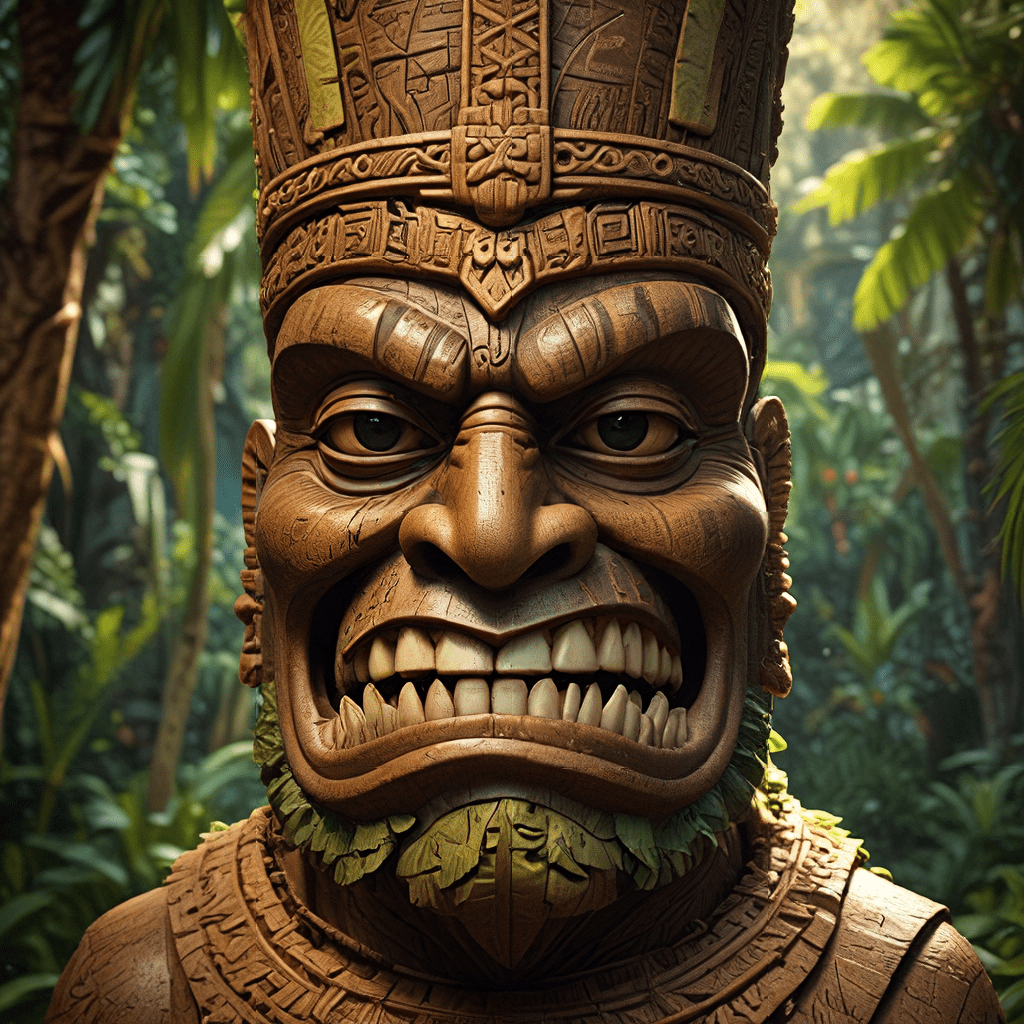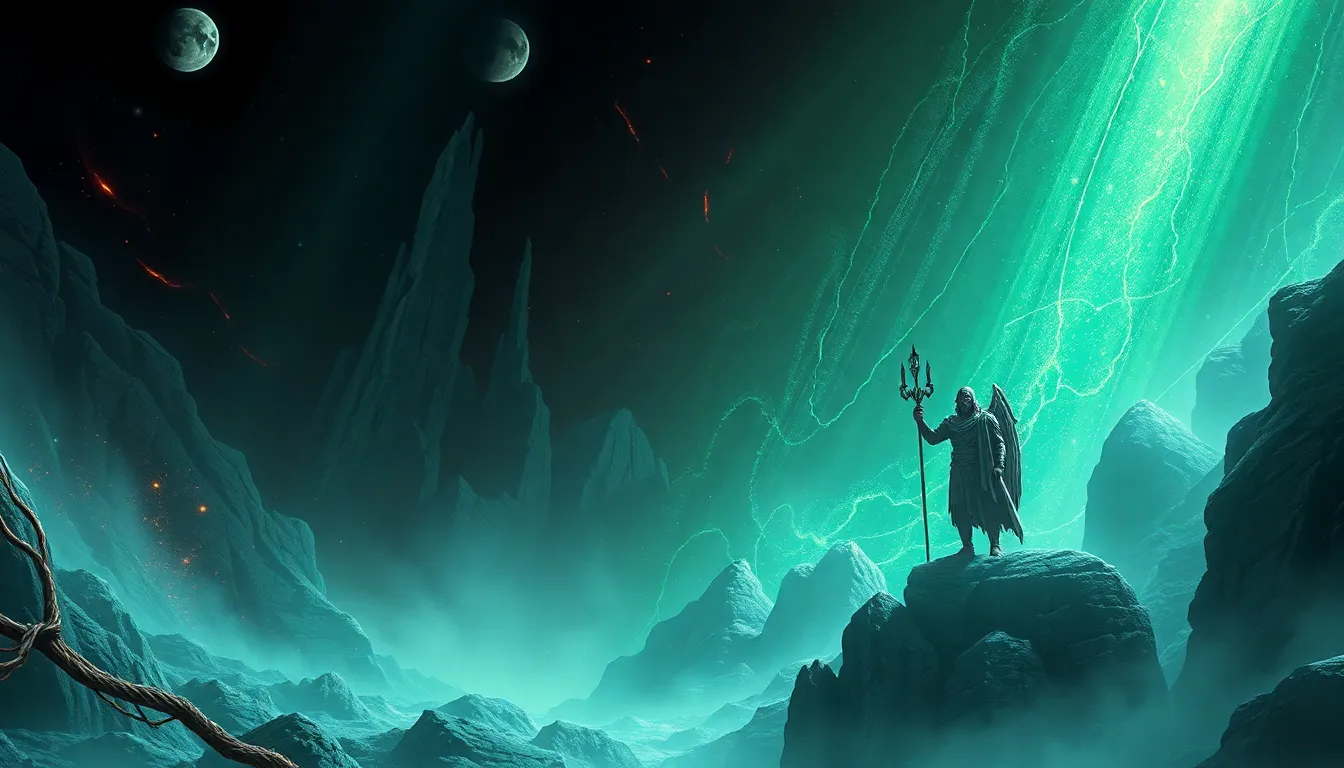Tiki: Unmasking the Ancient Hawaiian Spirit
Introduction: A Brief History of Tiki
In the mesmerizing tapestry of Hawaiian culture, the enigmatic figure of Tiki stands as a potent symbol, weaving together threads of mythology, spirituality, and ancestral wisdom. A potent symbol in Hawaiian culture, Tiki embodies a complex and multifaceted representation of ancient beliefs and practices. The term "Tiki" itself holds multiple meanings, encompassing both the physical manifestation of a deity or ancestral spirit, as well as the concept of creation and the divine essence that permeates the natural world.
While the exact origins of Tiki remain shrouded in the mists of time, evidence suggests that Tiki figures first emerged in ancient Hawaii, predating European contact. These figures were often carved from wood or stone, taking on a variety of forms, from intricately detailed human-like figures to stylized representations of animals, plants, and even abstract forms. The appearance of Tiki figures varied significantly across different regions of the Hawaiian Islands, reflecting the diverse cultural and spiritual traditions of each island community.
The enduring popularity of Tiki figures and their presence in Hawaiian art, architecture, and daily life attest to their profound influence on Hawaiian culture. From the earliest days of Polynesian navigation to the present day, Tiki has served as a potent symbol of protection, fertility, and ancestral guidance.
The Power of Tiki: A God or a Guardian?
The true nature of Tiki is a subject of ongoing debate and interpretation, as the concept defies easy categorization. Some scholars believe that Tiki represents a single, supreme deity, while others view it as a pantheon of gods, each possessing specific attributes and powers. Still others emphasize the role of Tiki as a spiritual guardian, embodying the spirits of ancestors or the protective presence of the natural world.
In Hawaiian mythology, Tiki is often associated with the creation of the islands and the origin of humanity. One popular myth tells the story of Kane, the god of creation, who sculpted the first human being from clay, giving them life and endowing them with the breath of life. In this myth, Tiki represents the divine spark that animates existence, connecting humanity to the spiritual realm.
Furthermore, Tiki is often invoked in rituals and ceremonies related to fishing, agriculture, and warfare. These practices highlight the belief that Tiki possesses the power to influence the natural world and ensure the prosperity of human communities. However, the concept of Tiki also encompasses the darker aspects of the human condition, including the potential for violence and conflict. Some Tiki figures are depicted with weapons, reflecting the belief that even gods could participate in the cycle of war and retribution.
The Origins of Tiki: Myths and Legends of the Creation
In the mystical realm of Hawaiian mythology, Tiki's origins lie entangled with creation myths that paint a vibrant picture of a primordial world. One compelling narrative tells the tale of the demigod Maui, a legendary figure renowned for his cunning and bravery. Maui, with his supernatural strength and powers, is said to have fished up the Hawaiian Islands from the depths of the ocean, using a magical hook made from the jawbone of a god. This epic act of creation is often symbolized by Tiki figures that depict Maui's heroic feat.
Another account whispers of the god Kane, a force of creation who shaped the first humans from clay, imbuing them with life. These tales reveal Tiki's close connection to the beginning of life and the sacred bond between humanity and the divine.
These myths also emphasize the role of Tiki as a symbol of fertility and abundance. In Polynesian cosmology, the ocean is considered to be the source of life, and the act of fishing represents a sacred act of communion with the forces of nature. By fishing up the islands, Maui brought forth not only land but also the promise of sustenance and prosperity. This theme of abundance is echoed in the numerous Tiki figures that depict fish, turtles, and other creatures associated with fertility and good fortune.
Tiki as a Protector: Warding Off Evil Spirits and Bringing Good Fortune
In the ancient Hawaiian worldview, the world was believed to be inhabited by a multitude of spirits, both benevolent and malevolent. Tiki figures played a pivotal role in protecting human communities from the dangers of evil spirits. These figures were often placed at the entrances of homes, villages, and sacred places, serving as guardians against malevolent forces.
The protective power of Tiki was also invoked in healing rituals and ceremonies aimed at warding off disease and misfortune. The placement of Tiki figures in homes was believed to attract positive energy and promote good health. Furthermore, the presence of Tiki was thought to bring good fortune in endeavors such as fishing, farming, and navigation. The power of Tiki, therefore, extended beyond the realm of the spiritual and encompassed the practical aspects of daily life.
The association of Tiki with protection is also evident in the symbolism of the Tiki god Ku. Ku, the patron god of war and a prominent figure in Hawaiian mythology, is often depicted holding a spear or club, reflecting his role as a fierce defender of his people. The imagery of Ku, with his protective presence, further emphasizes the role of Tiki figures as guardians against harm.
Tiki as a Fertility Symbol: Connections to Abundance and Prosperity
Beyond their protective role, Tiki figures are also deeply entwined with the concept of fertility and abundance. This theme is woven through many aspects of Hawaiian culture, from the reverence for the land and its bounty to the importance of family and community. Tiki figures often depict elements associated with fertility, such as plants, animals, and human figures in postures of sexual union.
The Hawaiian goddess Laka, also known as the "mother of the forest," is a prominent deity associated with fertility and abundance. Laka is often depicted in association with Tiki figures, symbolizing the interconnectedness of creation and spiritual power. Furthermore, the iconic Hawaiian hula dance, which is deeply rooted in the celebration of life and fertility, is often performed in honor of Laka and the spirit of Tiki.
The connection between Tiki and fertility is also evident in the practice of placing Tiki figures near sacred sites, such as burial grounds and temple complexes. These locations were considered to be places of great power, where the spirits of the ancestors resided and where the cycle of life continued. By placing Tiki figures at these sites, the Hawaiians sought to invoke the blessings of fertility and abundance for their communities.
Tiki as a Representation of Ancestral Spirits: Honoring the Past and Guiding the Future
In the Hawaiian worldview, the connection between the living and the dead is deeply profound. The ancestors are not simply forgotten figures of the past; they are believed to be present in the world, offering guidance, protection, and wisdom to their descendants. Tiki figures serve as powerful representations of these ancestral spirits, embodying their enduring presence and influence.
The placement of Tiki figures near burial grounds and sacred sites reinforces this connection. These figures served as a visual reminder of the ancestors' presence and a means of honoring their memory. It is believed that by respecting their ancestors, the living could draw strength and guidance from their wisdom.
The concept of "kuleana," a Hawaiian term that encompasses responsibility, duty, and obligation, underscores the importance of honoring one's ancestors. Tiki figures act as tangible reminders of the kuleana that each generation has to uphold the values and traditions of their ancestors. By embodying the spirits of the past, they serve as guides for the future, reminding future generations of the principles that have sustained their community.
Moreover, Tiki figures often incorporate elements that symbolize the lineage and history of their respective communities. These elements, such as specific carvings, colors, or designs, serve as visual markers of familial connections and cultural heritage. The act of creating and displaying Tiki figures reinforces the importance of preserving cultural traditions and honoring the legacy of past generations.
Theories of Tiki Symbolism: Modern Interpretations and Cultural Influences
While Tiki's origins are firmly rooted in ancient Hawaiian culture, the symbolism associated with these figures has evolved over time, influenced by changing cultural contexts and modern interpretations.
In recent decades, Tiki has gained popularity as a symbol of Polynesian culture, encompassing a broader range of Pacific Island traditions beyond just Hawaii. This expanded connection has led to new interpretations of Tiki symbolism, as different cultures have incorporated their own beliefs and traditions into the broader concept.
For example, the association of Tiki with Polynesian navigation and exploration has gained prominence, reflecting the importance of seafaring in Pacific Island cultures. This association is often depicted through Tiki figures that feature stylized canoes, fish, and other nautical motifs.
The popularity of Tiki in Western culture, particularly in the 1950s and 1960s, has also influenced the symbolism associated with these figures. The "Tiki culture" that emerged in the United States often incorporated elements of Hawaiian and Polynesian culture, giving rise to interpretations of Tiki that emphasized themes of escapism, tropical paradise, and exoticism.
Despite these modern interpretations, the core symbolism of Tiki, rooted in ancient Hawaiian beliefs, remains enduring. Whether viewed as a deity, a guardian spirit, or a representation of the ancestors, Tiki continues to hold significance as a symbol of connection, protection, and cultural identity.
The Evolution of Tiki: From Sacred Figures to Popular Culture Icons
The journey of Tiki from sacred figures of ancient Hawaii to popular culture icons is a fascinating testament to its enduring appeal and adaptability. While originally serving as powerful symbols of spirituality and cultural identity in their native context, Tiki figures have transcended their original purpose, evolving to represent a range of different meanings and associations.
The spread of Tiki culture in the 20th century, fueled by the popularity of Polynesian themes in art, music, and travel, led to a broader understanding of Tiki as a symbol of exoticism, relaxation, and tropical escapism. This association is evident in the proliferation of Tiki-themed restaurants, bars, and vacation destinations that emerged in the United States and other parts of the world.
The evolution of Tiki also reflects the changing relationship between traditional cultures and modern society. The commercialization of Tiki imagery, while contributing to its global reach, has also raised questions about the appropriation and misrepresentation of cultural symbols.
Despite these controversies, Tiki continues to hold a significant place in popular culture, inspiring artists, designers, and entrepreneurs. The enduring appeal of Tiki lies in its ability to evoke a sense of wonder, adventure, and connection to the natural world.
Conclusion: The Enduring Legacy of Tiki in Hawaiian Culture and Beyond
The enduring legacy of Tiki speaks volumes about the power of symbolism in shaping cultural identity and preserving ancestral traditions. From its roots in ancient Hawaiian mythology and spirituality, Tiki has evolved to encompass a broader range of meanings and associations, reflecting the influence of modern interpretations and cultural exchange.
In Hawaii, Tiki continues to hold significant cultural and spiritual meaning, serving as a powerful reminder of the ancestors, the connection to the natural world, and the importance of preserving tradition. The enduring presence of Tiki in Hawaiian art, architecture, and daily life ensures its continued relevance as a symbol of cultural identity and pride.
Beyond Hawaii, Tiki has captured the imagination of people around the world, serving as a symbol of exoticism, escapism, and connection to the natural world. While the commercialization of Tiki imagery has raised questions about cultural appropriation, its enduring appeal testifies to its ability to transcend cultural boundaries and inspire a sense of wonder and connection to the past.
As long as Tiki continues to be celebrated and reinterpreted, its legacy will endure, reminding us of the power of symbolism to shape cultures, connect generations, and inspire new forms of expression.
FAQ
What is the meaning of Tiki?
The meaning of “Tiki” is multifaceted and encompasses both the physical representation of a deity or ancestral spirit and the concept of creation itself. It symbolizes the divine essence that permeates the natural world.
How are Tiki figures used in Hawaiian culture?
Tiki figures are deeply integrated into Hawaiian culture, serving as powerful symbols of protection, fertility, and ancestral guidance. They are often placed at the entrances of homes, villages, and sacred places to ward off evil spirits and attract good fortune.
Who are some of the deities associated with Tiki?
Notable deities associated with Tiki include Kane, the god of creation, and Ku, the patron god of war. They represent the diverse aspects of Tiki symbolism, from creation and fertility to protection and strength.
What is the significance of Tiki figures in modern times?
While originally rooted in ancient Hawaiian cultural practices, Tiki figures have evolved to represent a broader range of meanings in modern times. They are often associated with Polynesian culture, exoticism, and tropical escapism, making them popular in art, design, and popular culture.
What are some of the controversies surrounding Tiki?
Commercialization and appropriation of Tiki imagery have sparked debates about the ethical use and representation of cultural symbols. The question arises whether the widespread use of Tiki imagery in popular culture respects and accurately reflects the traditions and values of Hawaiian and Polynesian cultures.




